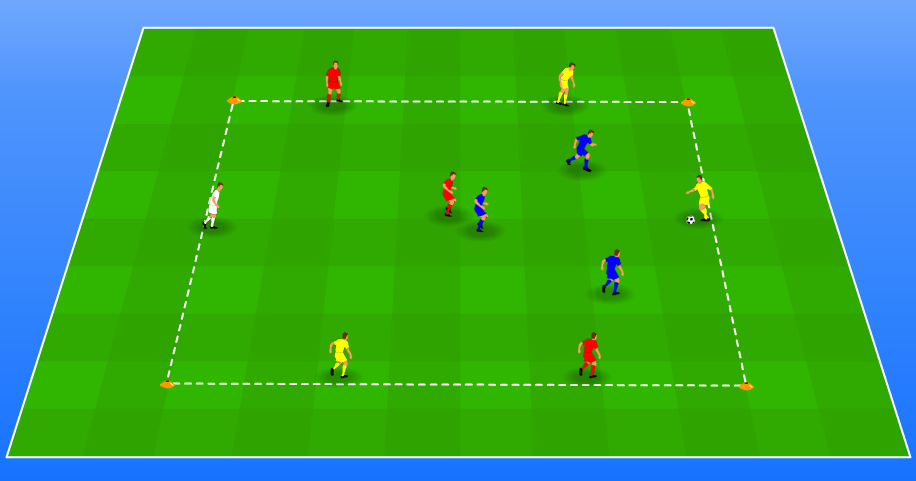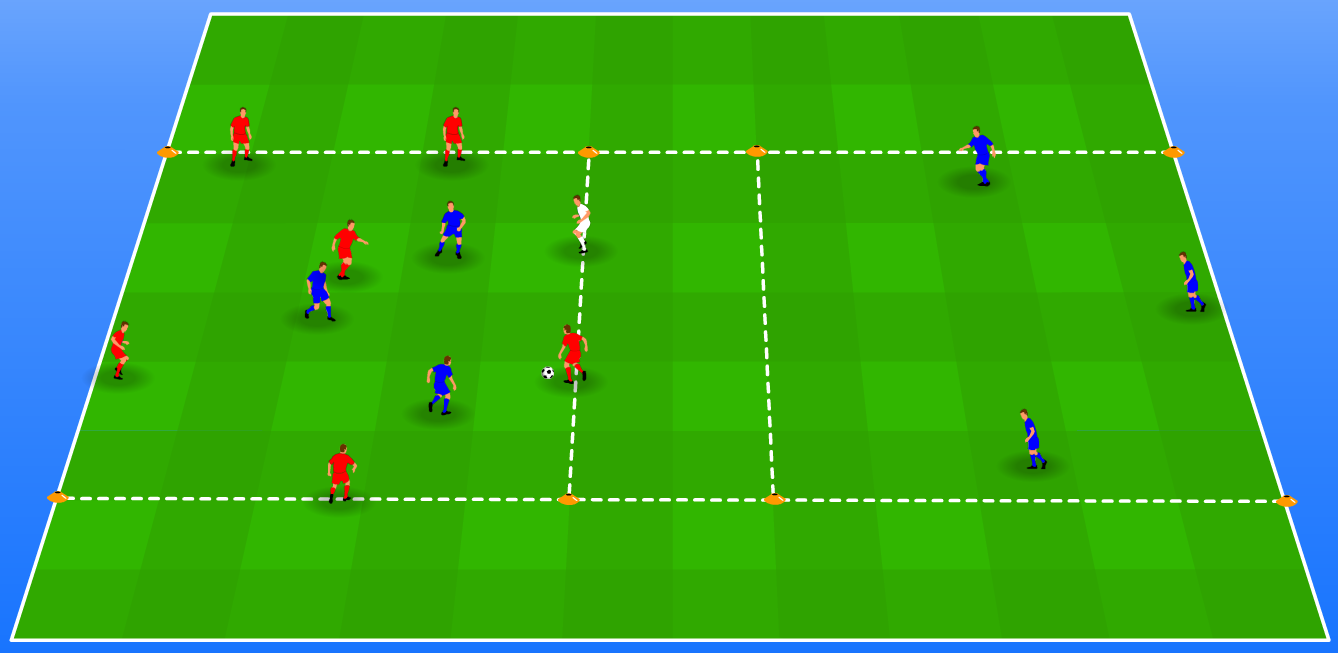Adjusting position games to match the available number of players

Most of the times, the number of available players for a position game is not ideal. For example, you want to play a 4v4 + 3 but you don’t have 11 players that session. In this article, we provide several ways to adjust the position game to the number of available players.
Basic drills
Almost every coach uses drills like 3v3 + 2, 4v4 + 3 (see drawing below) and 6v6 + 4. Two teams try to keep possession and the neutral players assist the team that has the ball. With an odd number of players, you choose an odd number of neutral players, such as 4v4 + 3. With an even number of players, you choose an even number of neutral players, such as 5v5 + 2.
An example of this adjustment was seen in the training session before the Europa League final of Ajax against Manchester United in 2017. Ajax coach Peter Bosz had 17 players at his disposal and played in two different parts of the field. At one side, he played 3v3 + 3, at the other side he played 3v3 + 2. One of those neutral players was on the side, the other one in the middle. Of course, the pitch size should be a little bit bigger than in the position game with three neutral players.
Three teams
Another frequently used drill is a position game with three teams. Two teams play together to keep the ball, the third team defends. When one of the two attacking teams loses the ball, they become the defenders.
With nine, twelve, fifteen or eighteen players, it is simple: just play with three different teams of three, four, five or six players. But which options are available for other numbers of players?
With ten, thirteen, sixteen of nineteen players, you can add a fourth colour. This player will be used as a neutral player (see drawing below). You could use a smaller pitch because there is a bigger overload of players. With eleven, fourteen, seventeen of twenty players, you have to be a little bit more creative as a coach. One solution is to put an underload of very good players together, for example the first eleven midfield players who are used to playing in small spaces. Another option is to put two players on the short sides of the pitch, for example the goalkeepers.

Two sections
Another frequently used drill is a possession game with two sections. One team tries to keep the ball in their ‘own’ section, the other team can send only a fixed number of defenders there to regain possession. When they win the ball, they play the ball to their own section and the other team defends (see drawing below).
Ideally, an even number of players is used. With ten players, you can play 5v2 or 5v3 in a section, depending on the pitch size and the level of the players. Even 5v1 or 5v4 could be possible in extreme cases. With fourteen players, the most used numbers are 7v4 per section, which could become 7v3 of 7v5.
With odd numbers, there is the option of adding a neutral player. He or she will always play in the section where the ball is to help the team that has possession of the ball. With thirteen players, this could be 6v6 +1, resulting in 7v3 per section (see drawing below). Three players of the defending team staying behind in their own section.

Varying number of players
It is advisable to think about changes in numbers of players in advance, so you can act quickly if a player leaves the training session, for example with an injury.
If you want to play a position game with a fixed number of players, it is also possible to exchange certain players after every few minutes or to use players from another team.
